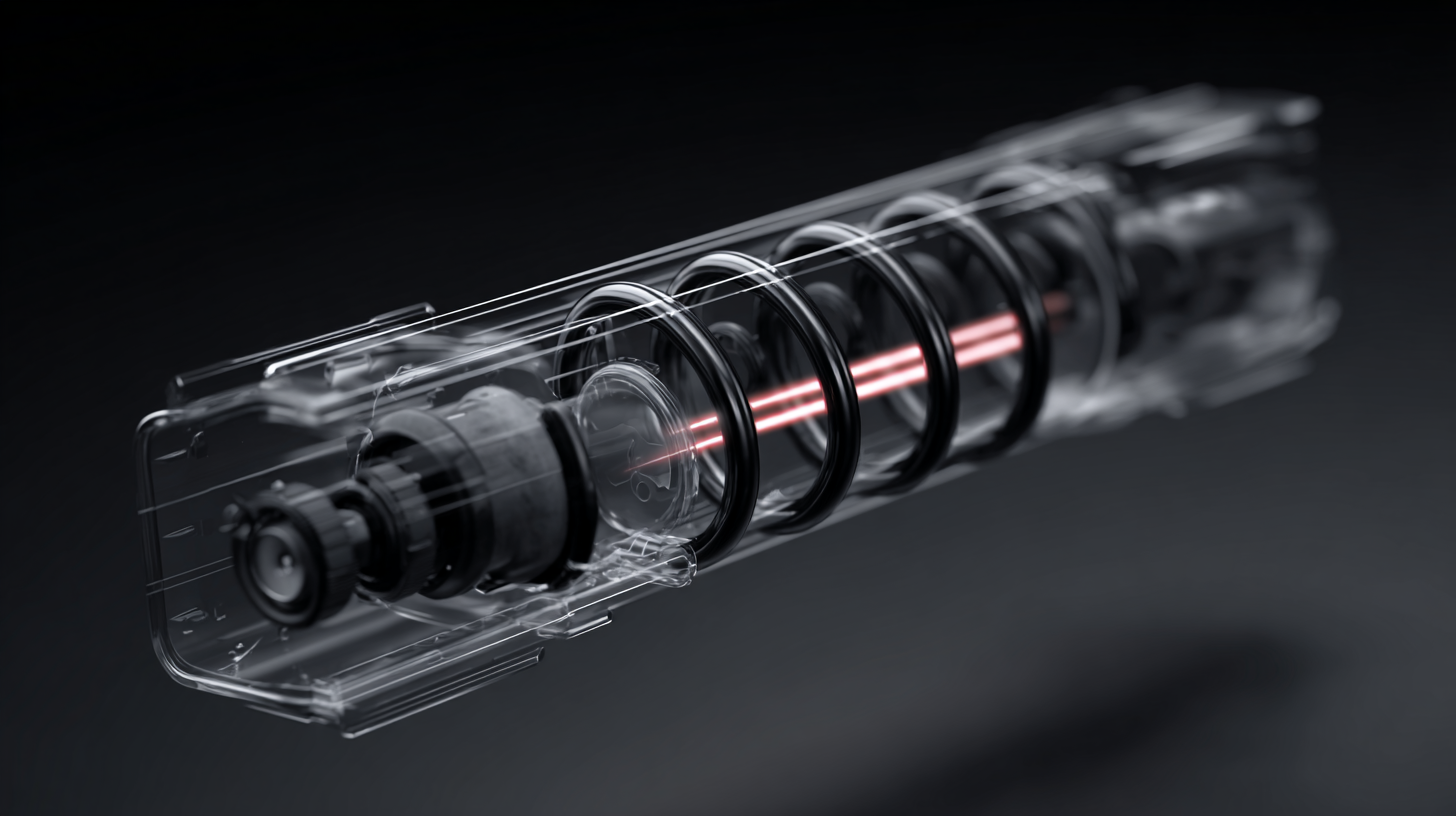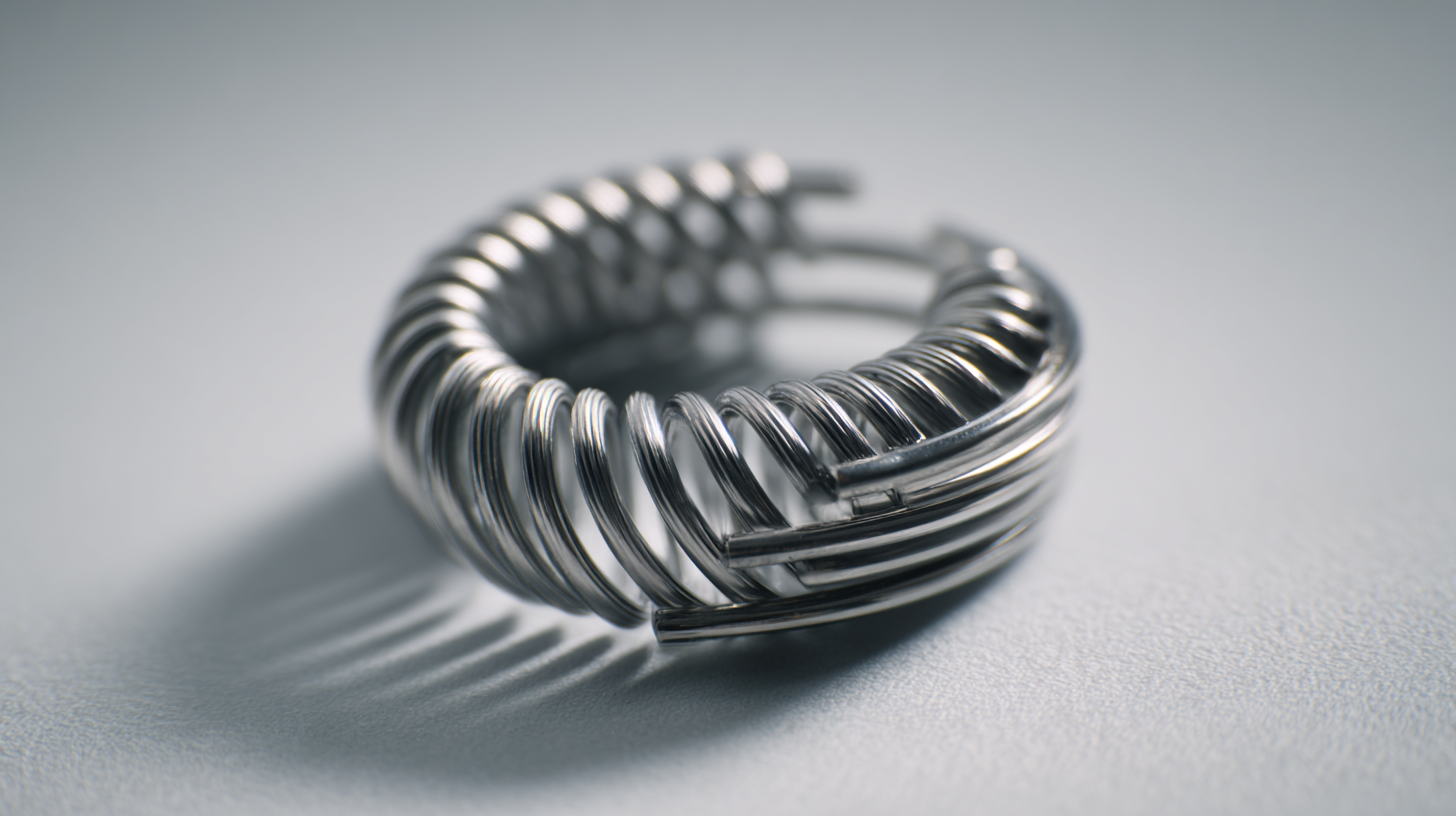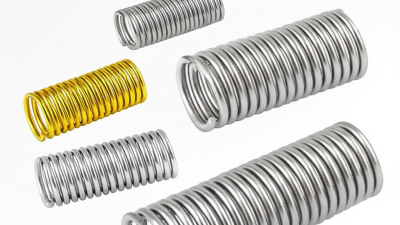Leave Your Message
In today's rapidly evolving design landscape, the integration of advanced materials and innovative mechanisms is essential for creating groundbreaking products. One such exemplary mechanism is the Touch-Sensitive Spring, which offers unique opportunities for interactive and responsive design solutions. These springs not only provide the fundamental functionality of traditional springs but also add a layer of sensitivity that can be harnessed in various applications, from consumer electronics to automotive systems.

By understanding the principles of Touch-Sensitive Springs, designers can develop products that enhance user experience, increase engagement, and push the boundaries of conventional design. This article will explore practical methods for effectively incorporating Touch-Sensitive Springs into your design projects, showcasing their versatility and potential to revolutionize the way we think about functionality and interactivity in modern engineering.
Touch-sensitive springs represent a captivating intersection of mechanical engineering and user interactivity. At their core, these springs operate on the principles of resistance and pressure sensitivity. When a user applies force to the spring, the deformation changes its electrical properties, such as resistance or capacitance. This interaction allows the spring to serve as a dynamic input device, responding not just to simple touch but to varying degrees of pressure, making it a versatile tool in contemporary design.
In practice, the mechanisms behind touch-sensitive springs can vary. They may incorporate conductive materials strategically placed on or within the spring itself, creating a circuit that completes upon pressure application. Alternatively, some designs utilize piezoelectric materials that generate an electrical charge in response to mechanical stress. These innovations enable designers to integrate touch sensitivity into products ranging from consumer electronics to advanced robotics, enhancing user experience through intuitive and tactile controls that respond in real-time to user actions. As designers continue to explore the capabilities of touch-sensitive springs, their potential to revolutionize interactive design remains vast and exciting.
The integration of touch-sensitive springs into design offers transformative possibilities across various industries, including automotive, consumer electronics, and medical devices. According to a recent report by Research and Markets, the touch-sensitive technology market is projected to grow at a CAGR of 12.5% from 2021 to 2026, underscoring the increasing demand for innovative design solutions. These springs can enhance the functionality of products by providing immediate tactile feedback, making user interfaces more intuitive and engaging.
Tips: When incorporating touch-sensitive springs in design, ensure that the materials used can withstand the required stress without losing their sensitivity. Conduct rigorous user testing to gather feedback on the responsiveness and durability of the springs, as this will be crucial for improving the final product design.
In the automotive industry, touch-sensitive springs can revolutionize how drivers interact with control panels, enhancing safety and usability. A study from the International Journal of Automotive Technology found that interfaces utilizing tactile sensors can reduce driver distraction by up to 30%, allowing for safer navigation while on the road. As designers seek to implement these solutions, they must focus on balancing functionality with aesthetic appeal to meet consumer expectations effectively.
| Application Area | Design Benefit | Material Used | Sensitivity Level |
|---|---|---|---|
| Consumer Electronics | Enhanced user interaction | Copper alloy | High |
| Automotive | Improved safety systems | Stainless steel | Medium |
| Healthcare | Adaptive monitoring devices | Beryllium copper | High |
| Aerospace | Weight reduction and efficiency | Titanium alloy | Low |
| Robotics | Improved tactile feedback | Polymer composites | Medium |
Touch-sensitive springs represent a groundbreaking integration of mechanical design and user interface technology, embodying a shift towards more interactive product concepts. By harnessing the capabilities of these innovative components, designers can create products that respond intuitively to user interactions, enhancing the overall user experience. According to a report by Markets and Markets, the global smart and interactive product market is projected to reach $251.3 billion by 2025, indicating a growing demand for products that seamlessly integrate responsive technologies.
Incorporating touch-sensitive springs into design not only creates engaging user interfaces but also allows for a more compact and efficient product layout. These springs can be used in various applications, from consumer electronics to automotive controls, where precise feedback and a tactile response are paramount. A study conducted by IDTechEx highlights that the market for touch-sensitive components is expected to grow at a CAGR of 12.8% over the next five years, emphasizing the significant potential for innovation. By exploring the unique properties of touch-sensitive springs, product designers can push the boundaries of traditional design and develop solutions that are not only functional but also delightful to interact with.

In the realm of innovative design, touch-sensitive springs present a unique opportunity to enhance user interaction and functionality. When implementing these technologies, designers must consider several key aspects. First, the material selection is crucial; the durability and elasticity of the spring impact both its performance and longevity. According to a report from the International Journal of Mechanical Engineering, alloys such as stainless steel or specialized polymers are often preferred for their resilience and ability to withstand repeated compression and expansion, ensuring a reliable user experience.
Furthermore, the integration of touch-sensitive springs into the product design necessitates careful attention to their sensitivity thresholds, which indicates how much force is required to trigger a response. A study by the Institute of Electrical and Electronics Engineers highlights that achieving optimal sensitivity helps in creating a seamless connection between user input and system response. Additionally, designers should consider the ergonomics of placement; positioning touch-sensitive springs where natural user interaction occurs can significantly enhance usability, as shown in user testing frameworks that indicate increased satisfaction and lower error rates when interactions feel intuitive.
Touch-sensitive technologies are rapidly evolving, paving the way for innovative design solutions across various industries. The capacitive touch controller IC market is experiencing significant growth, driven by applications in mobile devices and wearables. It is expected that single touch (self-capacitance) and multi-touch (mutual capacitance) controller ICs will capture substantial market shares, highlighting the shift towards touch-sensitive interfaces. As this technology matures, manufacturers are increasingly investing in advanced haptic feedback systems that enhance user interaction and experience.

The introduction of linear motor technology has marked a pivotal change in mobile devices, offering superior haptic feedback that distinguishes brands in a competitive marketplace. The surge in interest from designers in Taiwan and key IT centers indicates a renewed focus on touchpad evolution, reflecting the adaptability of haptic technologies. As touch-sensitive solutions become integral to user interfaces, the trend toward immersive and tactile experiences will continue to shape the future of product design and user engagement. With ongoing advancements and a growing demand for interactive solutions, the potential for touch-sensitive technology remains promising.






